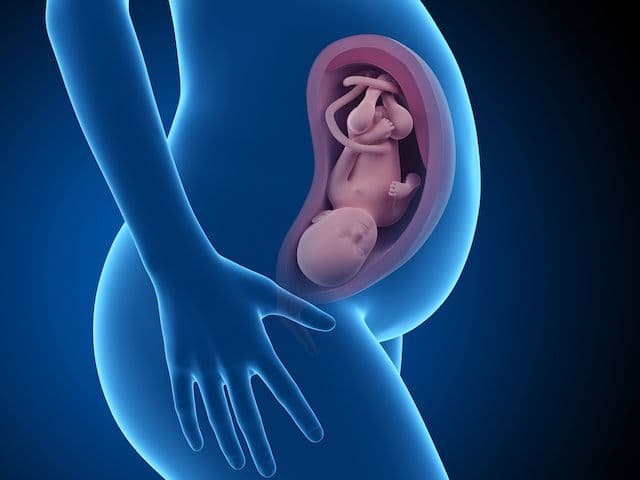36 Weeks Pregnant
Pregnancy Week by Week
Obie Editorial Team

Your baby, your body, your partner and the prenatal visit, plus tips for the 36th week of pregnancy.
Your baby
Four weeks to go until the due date now! During the next few weeks, the weight of your baby will shift downward relieving some of the shortness of breath associated with the upward growth of the uterus. While this can leave you feeling as if you have enough wind to run a marathon, the relief comes at a price. That marathon will be run to and from the bathroom. The downshift in weight leaves very little space for storage in the bladder. The fetus continues to collect fat with dimpling starting on knees and elbows.
Multiple fetuses weigh about 5 pounds at this point. The average twin weighs five pounds five ounces at birth and is born between weeks 36 and 37. It will not be long now if you are expecting multiples.
Your body
The body is making some rapid changes at this point. Baby weight may be shifting downward and Braxton Hicks contractions are coming more frequently. Increased blood pressure and fluid retention are also common in the last month of pregnancy but will be watched closely by your doctor, as they are also signs of preeclampsia.
At the prenatal visit
False labor and true labor need to be discussed during the next prenatal visit. False labor symptoms are typically the same as active labor, but contractions are not patterned and they do not work to change the cervix. At home, you cannot check for cervical progression, so they will need to clock contractions and write down the frequency and duration for more than an hour.
Talking to the doctor every week means more chances to ask questions. Continue to write them down because you may lose track of thought easily during the last weeks of gestation. There are no dumb questions and asking is the only way you will know the answer.
Your partner
Take this time to support your pregnant partner and rest. Next week is filled with more to-do lists so this week should be one of contemplation and sleep. It is important to remember these tips: all parents are nervous, baby poop is not toxic (and changing diapers goes a long way!), and spit-up is normal and non-lethal.
Tips for this week
Understanding the signs of labor is important at this stage of pregnancy. Common signs of labor include abdominal weight shift, bloody show, breaking of the bag of waters, and change in the cervix (effacement and dilation).










